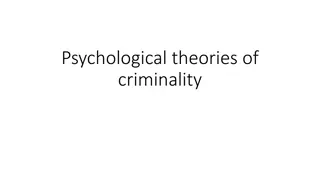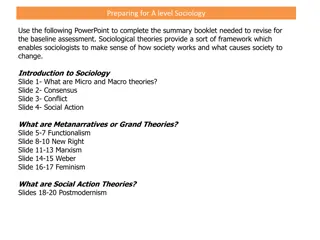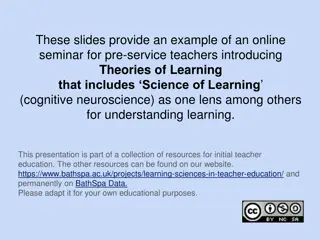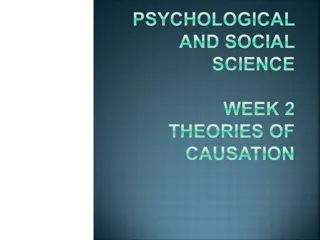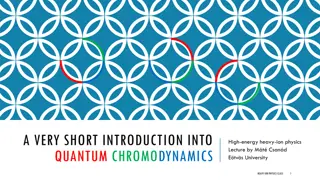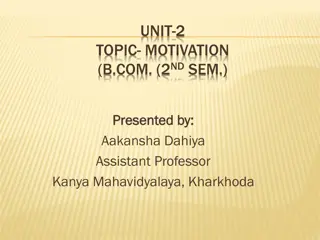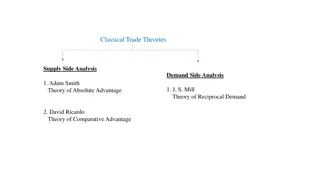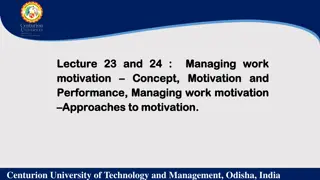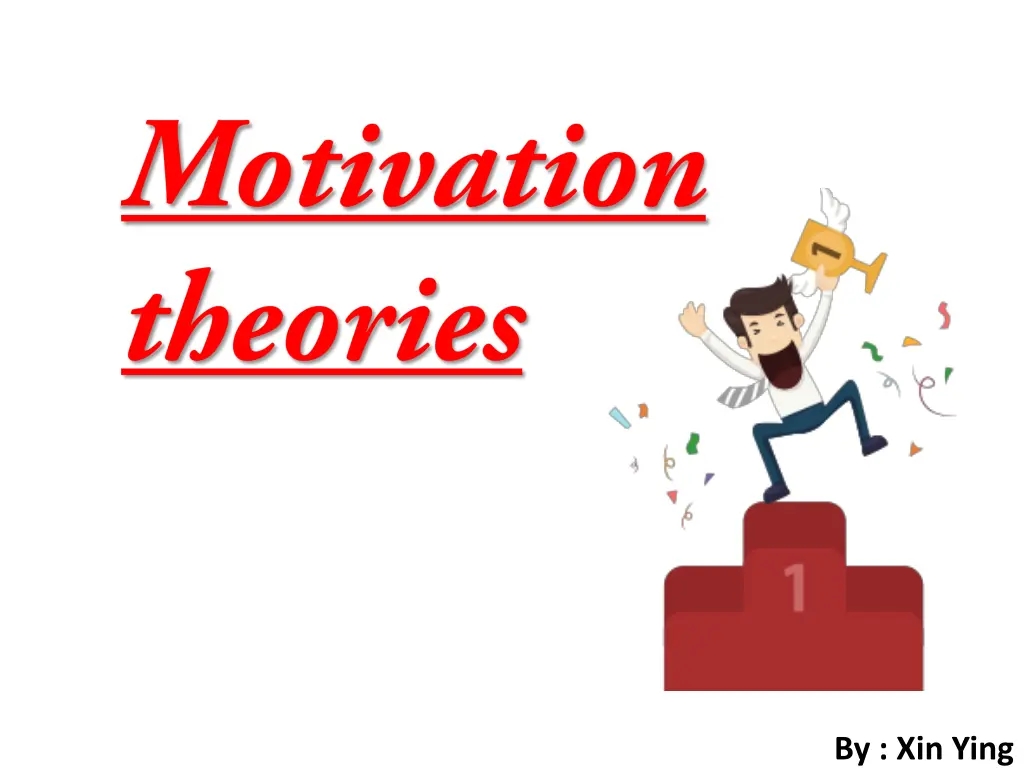
Understanding Employee Motivation Theories and Their Impact
Explore the essence of employee motivation in the workplace through theories like Maslow's Hierarchy, FW Taylor's Scientific Management, and Herzberg's Two-Factor Theory. Learn about the importance, advantages, and disadvantages of motivating employees to achieve increased commitment, satisfaction, development, and efficiency. Uncover how different motivational factors influence workers and organizational performance.
Download Presentation

Please find below an Image/Link to download the presentation.
The content on the website is provided AS IS for your information and personal use only. It may not be sold, licensed, or shared on other websites without obtaining consent from the author. If you encounter any issues during the download, it is possible that the publisher has removed the file from their server.
You are allowed to download the files provided on this website for personal or commercial use, subject to the condition that they are used lawfully. All files are the property of their respective owners.
The content on the website is provided AS IS for your information and personal use only. It may not be sold, licensed, or shared on other websites without obtaining consent from the author.
E N D
Presentation Transcript
What is motivation? - workers want to work hard and effectively for their employer. - the desire to achieve a certain result or outcome
Importance of employee motivation Increased employee commitment Improved employee satisfaction Ongoing employee development Improved employee efficiency
Types of motivation theories
Advantages Disadvantages relevant in all fields difficult to measure simple to understand cultural differences it takes into account human nature not all individuals think in the same way
FW Taylor Theory (scientific management) FW Taylor Theory (scientific management) is a theory of management that analyzes and synthesizes workflows . Its main objective is improving economic efficiency, especially labour productivity. It was one of the earliest attempts to apply science to the engineering of processes and to management.
Advantages Disadvantages Cost of production is reduced Requires huge capital Unemployment Efficiency increased Adverse effects Best use of resources and development Follows narrow application Good working conditions Time consuming Avoids labor and management disputes
The Two Factor Theory by Herzberg is a theory about motivation of employees. The Two Factor Theory assumes on the one hand, that employees can be dissatisfied with their jobs. This often has something to do with so-called hygiene factors, such as salary and work conditions. On the other hand, employees satisfaction has to do with so-called motivation factors. These factors have to do with development opportunities, responsibility and appreciation.
Advantages Disadvantages Increased understanding of role of motivation Reliability questioned, it focuses more on job satisfaction, not on motivation. Double dimensions of two factors are easy to interpret and understand Does not account for workers uninterested in growth and advancement.





